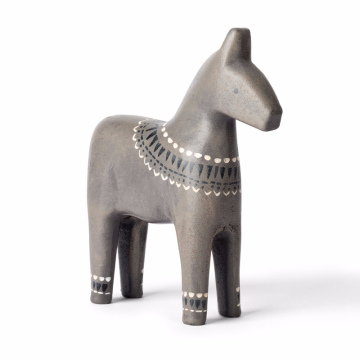Introduction to Spanish Cuisine
Spanish cuisine is a vibrant and diverse culinary landscape, reflecting the rich historical influences and regional specialties that characterize the Iberian Peninsula. Over centuries, Spain's culinary identity has been shaped by various factors, including trade, conquest, and migration, enabling the mixture of flavors and techniques that define traditional Spanish recipes today. The country boasts an extraordinary variety of ingredients, due in large part to its different geographical regions, each contributing unique elements to the food scene. For instance, the lush Mediterranean coast offers an abundance of seafood, while the fertile plains produce a wealth of vegetables and grains.
At the heart of Spanish cooking is an emphasis on fresh, local ingredients, which play a crucial role in ensuring that traditional dishes retain their authenticity and distinctive flavors. This focus on quality has fostered a deep appreciation for seasonal produce, which not only enhances the taste of each dish but also supports local farmers and producers. Spanish cuisine places great importance on community and the social act of sharing food; meals are often enjoyed leisurely among family and friends, demonstrating the integral role that food plays in Spanish culture.
Traditional recipes, passed down through generations, serve as a connection to Spain's rich history and offer insight into the various regional influences that have shaped its culinary practices. From the aromatic tapas of Andalusia to the hearty stews of Castilla, these iconic dishes provide a gateway to understanding the country's cultural tapestry. As we embark on this culinary journey through Spain’s gastronomic wonders, we will discover the stories behind these cherished recipes, highlighting their significance and the passion that drives their continued popularity. Through this exploration, readers will be invited to appreciate the beauty and complexity of Spanish cuisine, encouraging them to partake in its timeless tradition.
Must-Try Traditional Spanish Dishes
Spain's culinary landscape is rich and diverse, showcasing a myriad of flavors and ingredients that reflect the country's vibrant culture. Among the most iconic traditional Spanish dishes are paella, gazpacho, tortilla española, and churros, each carrying its unique character and history.
Paella, originating from the Valencia region, is perhaps the most celebrated Spanish dish. Characterized by its saffron-infused rice, this dish typically includes a mix of seafood, meat, and seasonal vegetables. Preparation involves using a wide, shallow pan that allows the rice to cook evenly while developing a delicious socarrat, the crispy layer at the bottom. Traditionally served during communal gatherings, paella remains a symbol of Spanish hospitality.
Another traditional staple is gazpacho, a refreshing cold soup that hails from the southern region of Andalusia. Ideal for hot summer months, this dish is made from blended ripe tomatoes, cucumbers, bell peppers, onions, garlic, olive oil, vinegar, and stale bread. Its vibrant flavors not only offer a healthy option but also provide a taste of Spain's agricultural bounty. For authentic preparation, it's crucial to use high-quality ingredients, as they are the essence of this dish.
Tortilla española, or Spanish omelette, is a simple yet satisfying blend of eggs, potatoes, and onions. The dish is often enjoyed at any time of day, served warm or cold. The secret to a perfect tortilla lies in achieving the right texture: creamy on the inside while golden on the outside. Sauté the potatoes gently, allowing them to retain their moisture to enhance the overall flavor.
Lastly, churros are a beloved traditional Spanish dessert, often enjoyed for breakfast or as a snack. These deep-fried pastries, typically served with a cup of thick hot chocolate for dipping, have a crispy exterior and a soft, doughy interior. To elevate your churros, consider incorporating flavored sugars or experimenting with various dipping sauces.
Each of these dishes represents a slice of Spanish identity and reveals the country's rich culinary heritage. Paying attention to authentic preparation techniques will not only elevate your cooking but also bring a taste of Spain to your kitchen.
The Role of Food in Spanish Culture
Food is a cornerstone of Spanish culture, serving as a vital means of connection and celebration for its people. Spanish meals are often more than mere sustenance; they are an occasion to gather, share, and engage in community life. This social aspect is particularly evident during fiestas and family gatherings, where traditional Spanish recipes come to life. The act of sharing a meal brings individuals together, fostering bonds and reinforcing social ties.
One hallmark of Spanish gastronomy is the practice of communal dining, epitomized by the concept of 'tapas.' These small, varied dishes allow diners to sample an array of flavors while encouraging conversation and interaction. As friends and family gather around a table laden with tapas, the dining experience transforms into a social event. Tapas can range from simple olives and cheese to more elaborate offerings, reflecting the local ingredients and regional specialties. This sharing mentality is a reflection of the deeply ingrained social fabric within Spanish society.
Furthermore, Spain boasts a rich tapestry of food markets and festivals that celebrate its culinary heritage. Markets such as La Boqueria in Barcelona or Mercado de San Miguel in Madrid are not merely places to purchase ingredients; they are vibrant hubs where tradition meets modernity. Locals and visitors alike are drawn to these markets, where the lively atmosphere enhances the sensory experience of Spanish food culture. Festivals celebrating local produce, such as the La Tomatina or Fiestas de San Juan, emphasize the importance of seasonal and locally sourced ingredients in Spanish cuisine.
Understanding the role of food in Spanish culture offers valuable insights into Spain's gastronomic wonders. It reveals how traditional recipes are cherished not only for their flavors but also for the shared experiences they create, weaving together the cultural fabric of the nation.
Bringing Spanish Flavors to Your Kitchen
Recreating traditional Spanish recipes in the comfort of your home can be an enriching culinary experience. To start, familiarizing yourself with essential ingredients commonly found in Spanish cooking is crucial. Staples such as olive oil, garlic, saffron, and a variety of fresh herbs like parsley and thyme play fundamental roles in enhancing the flavors of many dishes. Additionally, regional ingredients such as chorizo, jamón (cured ham), and a wide range of fresh seafood are often used to create authentic Spanish flavors.
When sourcing ingredients, it is important to seek out authentic products. Local markets and specialized grocery stores often carry imported goods that lend authenticity to your dishes. For instance, look for high-quality Spanish olive oil and canned tomatoes, or visit a local butcher for traditional cured meats. Furthermore, online retailers can be a valuable resource for hard-to-find items like pimentón (smoked paprika) or specialty rice for paella.
Equipping your kitchen for Spanish cooking can also elevate your culinary efforts. Essential tools might include a paellera (paella pan), tortilla maker, and various knives tailored for your specific recipes. A mortar and pestle can be beneficial for preparing traditional sauces such as romesco or alioli, which are often featured in Spanish cuisine.
To engage more directly with Spanish culinary techniques, consider preparing a classic dish such as Tortilla Española, or Spanish potato omelet. Begin by whisking together eggs and seasoning them with salt. Next, sauté thinly sliced potatoes and onions in olive oil until they are tender. Combine this mixture with the eggs and gently pour it back into the skillet to cook until set. Flip the tortilla to ensure both sides are golden brown. This simple yet satisfying recipe embodies the heart and soul of Spanish cooking.
By embracing these elements, you can bring the vibrant and diverse flavors of Spain to your kitchen, inspiring culinary creativity and enriching your mealtimes.








